We've found 1000 matches for your search. Order by
Results
-
 £44.95
£44.95St. Michael's Mount (Brass Band - Score and Parts)
Estimated dispatch 7-14 working days
-
 £44.95
£44.95Strand on the Green (Overture) (Brass Band - Score and Parts)
Estimated dispatch 7-14 working days
-
 £59.95
£59.95Suite in Bb (Brass Band - Score and Parts)
Estimated dispatch 7-14 working days
-
 £59.95
£59.95Sunrise (Brass Band - Score and Parts)
Estimated dispatch 7-14 working days
-
 £59.95
£59.95Sunset Rhapsody (Brass Band - Score and Parts)
Estimated dispatch 7-14 working days
-
 £34.95
£34.95Swedish March, A (Fanfare) (Brass Band - Score and Parts)
Estimated dispatch 7-14 working days
-
 £59.95
£59.95Symphonic Music (Brass Band - Score and Parts)
Estimated dispatch 7-14 working days
-
 £59.95
£59.95Symphony No. 5, Themes From (Brass Band - Score and Parts)
Estimated dispatch 7-14 working days
-
 £44.95
£44.95Tales of Hoffmann (Brass Band - Score and Parts)
Estimated dispatch 7-14 working days
-
 £59.95
£59.95Tam O' Shanter's Ride (Symphonic Sketch) (Brass Band - Score and Parts)
Estimated dispatch 7-14 working days
